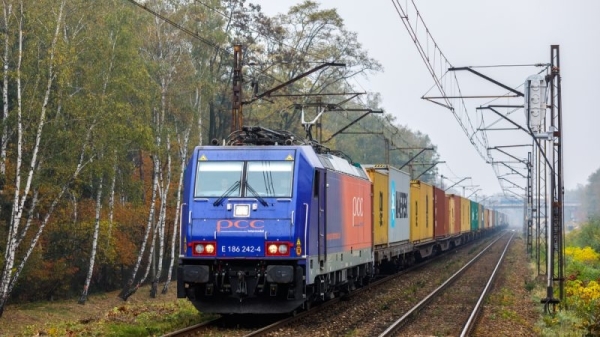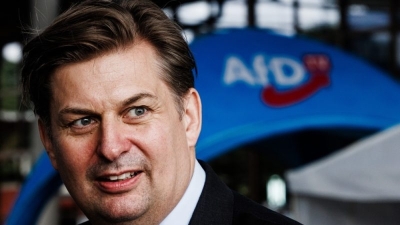EU parliament adopts law to enable longer cross border freight trains

The European Parliament voted on Wednesday (24 April) to update the EU’s plans for its core transport networks, aiming to boost freight transport by train by setting higher technical standards for core rail routes.
As part of its climate agenda, the EU wants to boost freight transport via train and have 30% of all goods transported by rail by 2030 – up from below 20% today.
On Wednesday (24 April), the Parliament adopted an updated plan for the bloc’s key transport networks, known as the ‘TEN-T network’, which aims to enable a shift in freight transport to rail, by setting higher standards for key routes across national borders.
“The regulation will enable rail transport to compete with road transport if it is implemented as foreseen,” centre-right Austrian lawmaker Barbara Thaler said in a statement.
Among other things, the new rules oblige member states to “make all possible efforts” to enable freight trains with a length of 740 meters to use all routes of the “core” TEN-T network by 2030.
By 2040, a newly established “extended core” network needs to allow for this train length and by 2050, the whole, or “comprehensive” TEN-T freight rail network, should accommodate this length.
The length of freight trains is crucial for them to be profitable and hence competitive with road transport, but EU countries differ substantially on what maximum length is allowed.
When passing through several countries, as more than half of freight trains do, operators have to adapt to the lowest standard of all countries involved, leading to trains being shorter than what operators would desire.
Other technical standards should also be better aligned across the bloc’s key freight rail network, such as electrifying the tracks, allowing for a minimum speed of 100 km/h and axle load of 22.5 tonnes, as well as switching towards an EU-wide traffic management system.

Graph: Esther Snippe, based on European Commission
Crucially, member states are also obliged to aim to reduce the time that freight trains have to wait at border crossings, which has been identified as a weak spot of EU-wide rail transport.
Several hours of every journey are often lost due to technical checks and changes necessary due to diverging standards, or because slots are not immediately available if trains are delayed.
By 2030, crossing borders should not take longer than 25 minutes, according to the legislation’s new targets.
Freight rail lobby group ERMA welcomed the introduction of the new requirements, saying it is “essential (that) there is a European approach to infrastructure standards and to the way exemptions are granted so as to preserve interoperability and continuity of the rail network”.
For the EU-wide traffic management system, however, known as ERTMS, the group would have hoped for more support to install the system in the operators’ trains. It argued that the switch towards the EU-wide system will “only be possible for the rail freight sector if there is a coherent and business-friendly strategy for on-board ERTMS deployment and financing”.
MEP Thaler, meanwhile, fears that the implementation of the new rules by EU countries might not go as smoothly as hoped, blaming national governments, and particularly Germany, for hesitating to commit to costly investments into rail infrastructure.
“Its implementation depends on the goodwill of the member states, as the general exemption clause “Haushaltsvorbehalt” [budgetary reservation] demanded by Berlin gives each member state a free pass as to what it implements and what it does not,” she told Euractiv.
“Paradoxically, this can become a veritable problem, especially for countries like Germany with many neighbouring states,” she added.

Borders weak spot of rail transport, new report warns
While shifting from road to rail is crucial for reaching the EU’s climate objectives in transport, borders between member states are a burden for many train operators, particularly freight transport, a report by the EU Agency for Railways warns.
With lower …
Read more with Euractiv




